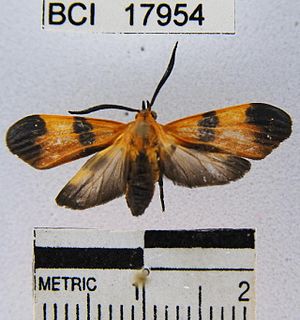Related Research Articles

The rufous-bellied seedsnipe is a wader which is a resident breeding bird in the Andes of South America south from Ecuador.

Simons's spiny rat, Proechimys simonsi, is a spiny rat species from South America. It is found in Bolivia, Brazil, Colombia, Ecuador and Peru. It was named for American scientific collector Perry O. Simons.

Telmatobius simonsi is a species of frog in the family Telmatobiidae. It is endemic to Bolivia. Its natural habitats are subtropical or tropical moist montane forest, subtropical or tropical high-altitude shrubland, subtropical or tropical high-altitude grassland, rivers, freshwater marshes, arable land, pastureland, rural gardens, heavily degraded former forest, ponds, and canals and ditches. It is threatened by habitat loss. It was named for American scientific collector Perry O. Simons.

The puna tapaculo is a species of bird in the family Rhinocryptidae. It is found in the eastern Puna grassland of Bolivia and Peru.
Melanoides nodicincta is a species of freshwater snail with a gill and an operculum, an aquatic gastropod mollusk in the family Thiaridae. It was found at a depth of 10 to 90 feet.

The Didelphinae are a subfamily of opossums consisting of 15 genera and 98 species, one of them extinct. Specimens have been collected throughout the Americas, but are predominant in South and Central America.
Correbidia is a genus of moths in the subfamily Arctiinae. The genus was erected by George Hampson in 1898.
Ancalecetus is an extinct genus of early whale known from the Late Eocene Birket Qarun Formation in Wadi Al-Hitan, Egypt. The species is named after anthropologist and primate researcher Elwyn L. Simons who discovered the type specimen in 1985.

Dorudontinae are a group of extinct cetaceans that are related to Basilosaurus.
Correbidia terminalis is a moth in the subfamily Arctiinae. It was described by Francis Walker in 1856. It is found from Mexico through Central America and Cuba and Puerto Rico to South America.

Prionacalus is a genus of beetles in the family Cerambycidae, containing the following species:
Correbidia calopteridia is a moth of the subfamily Arctiinae. It was described by Arthur Gardiner Butler in 1878. It is found in Pará, Brazil.

Correbidia elegans is a moth of the subfamily Arctiinae. It was described by Herbert Druce in 1884. It is found in Mexico and Panama.
Correbidia notata is a moth of the subfamily Arctiinae. It was described by Arthur Gardiner Butler in 1878. It is found in the Amazon region.
Correbidia striata is a moth of the subfamily Arctiinae. It was described by Herbert Druce in 1884. It is found in Panama.
Correbidia assimilis is a moth of the subfamily Arctiinae. It was described by Rothschild in 1912. It is found in Venezuela and possibly Central America.
Correbidia costinotata is a moth of the subfamily Arctiinae. It was described by Schaus in 1911. It is found in Costa Rica.
Correbidia joinvillea is a moth of the subfamily Arctiinae. It was described by Schaus in 1921. It is found in Brazil.
The Euchromiina are a subtribe of tiger moths in the family Erebidae. It was described by Arthur Gardiner Butler in 1876. Many species in the subtribe are mimics of wasps.
Perry Oveitt Simons was an American scientific collector. He predominantly worked in the Neotropics.
References
- ↑ Beccaloni, G.; Scoble, M.; Kitching, I.; Simonsen, T.; Robinson, G.; Pitkin, B.; Hine, A.; Lyal, C., eds. (2003). "Correbidia simonsi". The Global Lepidoptera Names Index . Natural History Museum . Retrieved May 1, 2018.
| This Arctiinae-related article is a stub. You can help Wikipedia by expanding it. |